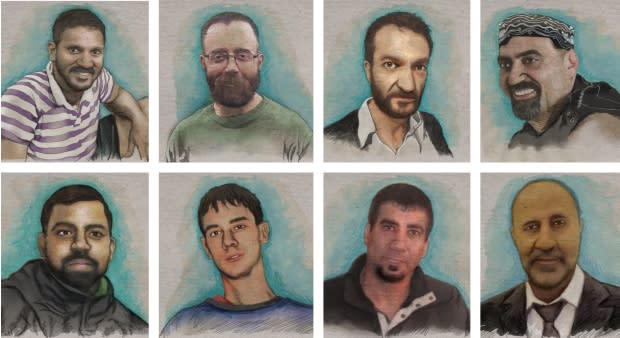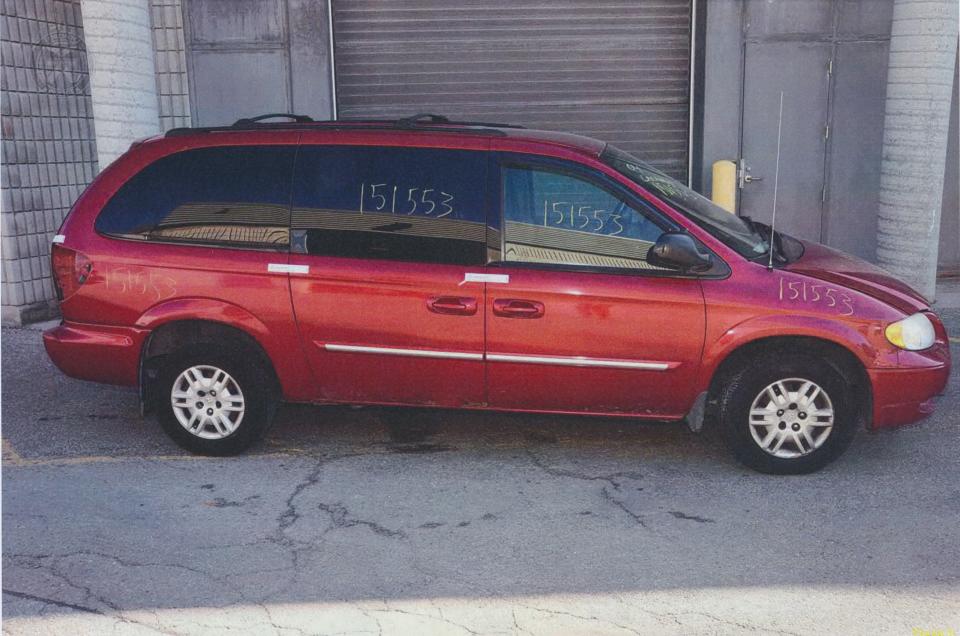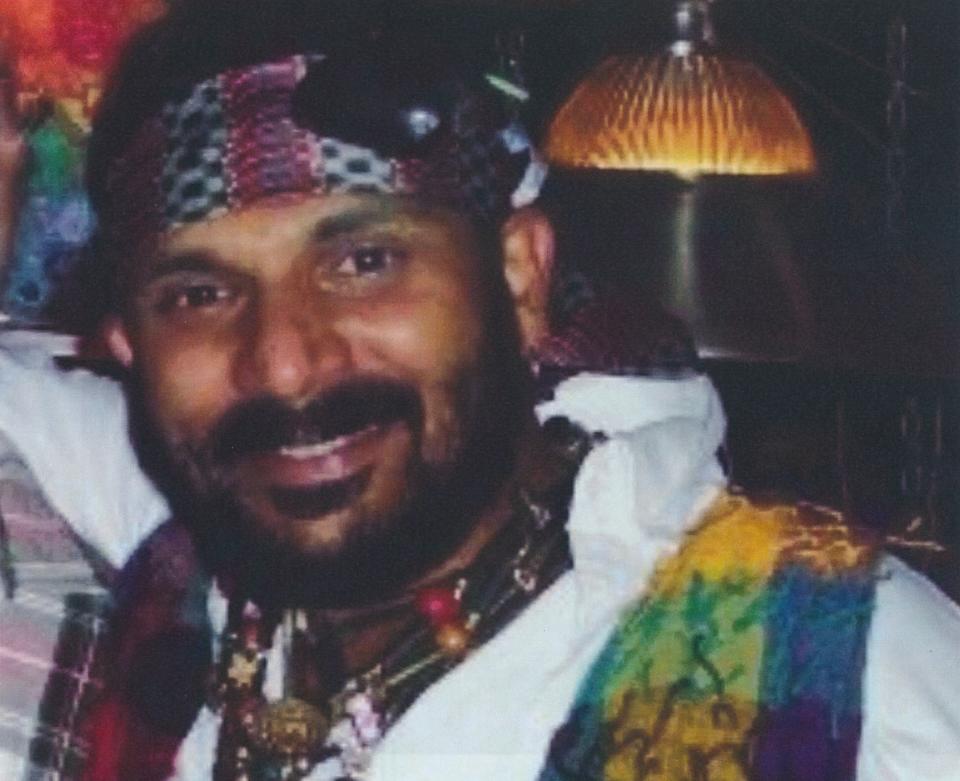The men who died at the hands of Bruce McArthur: Families, friends speak about their lives

WARNING: The story below contains graphic details.
“For years, members of the LGBTQ community in Toronto believed they were being targeted by a killer and they were right.”
This was the statement with which Crown attorney Michael Cantlon began the sentencing hearing for serial killer Bruce McArthur on Feb. 4, and it was a sentiment that would be repeated throughout the day.
On Jan. 29, McArthur pleaded guilty to eight counts of first degree murder in the deaths of eight Toronto men, most of whom had ties to the city’s Gay Village community.
Cantlon also issued a solemn warning that people in the courtroom would hear details so disturbing as to possibly affect their health.
He urged them to “think carefully about your need to be here,” before offering a detailed account of the police investigation into the murders of Selim Esen, Dean Lisowick, Kirushna Kanagaratnam, Soroushi Mahmudi, Majeed Kayhan, Abdulbasir Faizi, Skandaraj Navaratnam and Andrew Kinsman.
It was an emotional start to a hearing expected to last three days.
Cantlon talked for over an hour about the “unprecedented amount of real, forensic, digital and documentary evidence” police had uncovered and used to catch McArthur and identify his victims.
At several points throughout the day, the Crown attorney grew emotional while addressing the court, his voice cracking. Cantlon paused for a moment as he discussed photos McArthur had taken of some of the men, and wiped his cheek when he was finished speaking.
Among people in the packed courtroom were brothers, sisters, mothers, wives, cousins friends and neighbours of the victims, as well as members and leaders of Toronto’s LGBTQ community. Some of the victims’ friends referred to them as “chosen family,” a term that holds special significance in LGBTQ communities.
McArthur was there too, as Cantlon detailed the ways he had tried, and failed, to cover his tracks, destroy evidence of his crimes and evade arrest.
The court heard that while McArthur had previously had contact with police, he was not considered a suspect in any of the men’s deaths until the final victim, Kinsman disappeared. Police used surveillance footage of Kinsman climbing into a red 2004 Dodge Caravan on the day he disappeared and an entry on that date in Kinsman’s calendar that read “Bruce” to narrow their search for a suspect.

When investigators cross-referenced those pieces of information with a Ministry of Transportation List of 6,181 red 2003 to 2006 Dodge Caravans in the GTA, McArthur showed up as the only person named “Bruce” who owned the same red 2004 model and had any recent contact with the Toronto Police Service.
When police eventually located the van at a wrecking yard where McArthur left it on Sept. 16, 2017, they found blood and other bodily fluids that matched Kinsman’s DNA profile.
Cantlon also told the court how, McArthur had tried to delete hundreds of photos of his victims from several digital devices in his home, but that forensic investigators had managed to recover them. The images, found on devices police seized during a covert search of McArthur’s apartment on Dec. 7, showed the men both in life and after McArthur had murdered them.
McArthur took photos of all the men except for Navaratnam and Faizi in the course of his attacks on them. In many of the photos, the men were posed similarly: naked, on top of or wearing a brown fur coat, sometimes wearing a fur lined hat. Violent as they were, the photos aided investigators in identifying the men and linking McArthur with their disappearances between 2010 and 2017.
The court heard other grim details: McArthur used a ligature to strangle most, if not all, of his victims. He kept hair from the men in bags stored on a property south of Mt. Pleasant Cemetery. He also kept mementos like jewelry and other personal items that belonged to the men.
Victim impact statements
While the first half of the day allowed the prosecution team to outline how the eight men died, the second half allowed those who knew them to describe just how much the impact of their deaths has displaced.
For several hours, the court heard victim impact and community statements from the men’s friends and family, including those who identified as their “chosen family.”
In her statement, Rev. Deana Dudley of the Metropolitan Community Church of Toronto explained that chosen families are comprised of close friends in the who offer love, support and understanding that biological family members can’t, or won’t, provide.
“So the community around us became our family and the men who were killed were our brothers,” Dudley said. “And for many people within the LGBTQ community, their murders have changed the way we look at the community forever.”

Greg Dunn, a friend of Kinsman’s, said Kinsman’s death affected not only himself, but his family.
“We are, we were his chosen family,” he said. “He was loved as a son by my parents, loved as a brother by my sisters, loved as an uncle by my niece.”
He described Kinsman as an intelligent, reliable friend who enjoyed gardening, the outdoors and travelling.
“He was one of the smartest people I have known,” he said. “He was kind, giving, understanding, honest and true.”
In their statements, Kinsman’s siblings — Karen Coles, Patricia Kinsman and Stephen Kinsman — described how his murder has fractured their lives.
“Since Andrew’s death, I have found it difficult to sleep,” Coles told the court. “I am less trusting of others now…I no longer believe what anyone tells me without checking the facts first.”
Patricia Kinsman said that she has learned to “pretend to be happy,” despite the fact that her life has changed forever.
“Nothing I can say here can describe the way I felt when I saw his remains in the funeral home,” she said.
Fighting back tears, Phil Werren, described his nine-year-long friendship with Navaratnam as very close and deeply enriching. Navaratnam immigrated to Canada from Sri Lanka, where he said he had been jailed for protesting deforestation.
“Things were never dull,” he said. “Even our arguments were valuable for me.”

He said up until the day Navaratnam disappeared, the two had kept in constant contact on the phone. Not knowing what had become of his friend left him devastated for years.
“I was very distraught and devastated because I had no idea what had happened. It took me several years to come to terms with his loss,” he said. “I hope justice will be served at last.”
Although she wasn’t in the courtroom, Dean Lisowick’s daughter Emily Bourgeois provided a statement for Cantlon to read.
The Crown lawyer became emotional as he read aloud how Bourgeois had never met her father, who struggled for years to find consistent housing. Her statement expressed how she always hoped chance would bring them together. She sometimes daydreamed that he had turned things around, married, and raised children. Sometimes she wondered if he was simply gone.

“For my father to be a victim was something I never thought I would hear. It didn’t feel real,” she said.
“I will now always have to live with knowing I will never have a relationship with my father because of what happened, but I know he is now watching over me and my family.”
A statement read by Nadia Wali on behalf of Esen’s family said the family’s lives were shattered by his murder. They described Esen as an intelligent, inquisitive person who stood firm for fairness and was passionate about sociology and philosophy. He borrowed money to help friends in need, and although he was the baby of the family, helped his siblings too.

The statement questioned how McArthur was allowed to prey on men in the Gay Village community for so long.
“We find it hard to believe that the serial killing of eight innocent gay persons went unnoticed for seven years,” the statement said.
“Selim spent his life asking why. We will continue his quest and we will keep asking why.”
McArthur is scheduled to return to court on Feb. 5 for a second round of victim impact statements.


